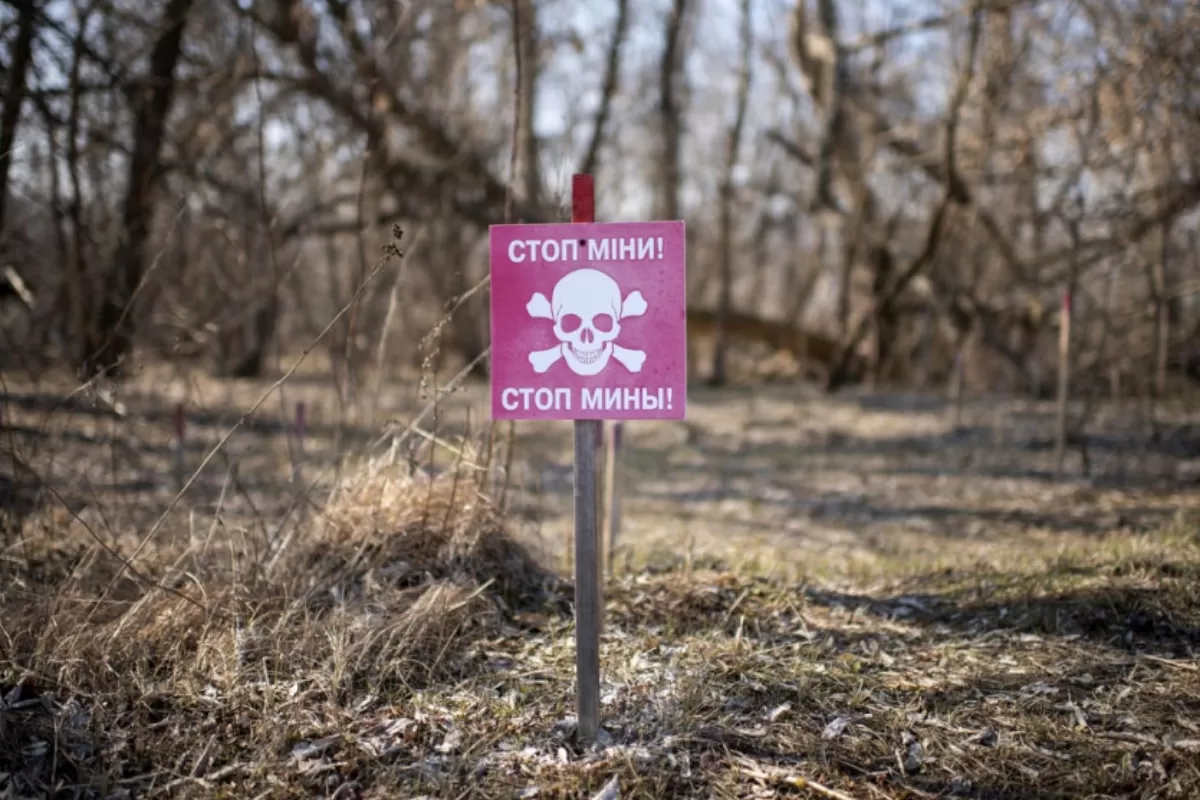
The Ukrainian armed forces place mines in villages along the line of contact, according to publications in the pro-Russia separatist territories in eastern Ukraine. The narrative is meant to show both Kiev's violation of the ceasefire agreements and its hostility towards the local civilian population.
NEWS: “Ukrainian Armed Forces militants continue to threaten the lives and health of civilians and obstruct patrol monitoring by the OSCE Special Mission. This was reported in “People's Militia of the DNR". Soldiers from the 3rd Battalion of the 28th Brigade planted 185 anti-tank mines on public roads and near buildings in the village of Krasnogorovka, without installing danger signs. Residents cannot leave the village and are afraid to move along the streets, for fear that they might be blown up by Ukrainian mines. ”
NARRATIVES: 1. The Ukrainian armed forces are fighting civilians in Donbass. 2. Ukraine violates the Minsk agreements (indirectly) and the ceasefire agreed in Paris.
LOCAL CONTEXT/ETHOS: The Donbass war broke out, with the support and involvement of the Russian Federation, shortly after pro-European forces came to power following massive protests known as the Euromaidan and the annexation of the Crimean peninsula by the Russian Federation. Militias in the region sparked a riot against Kiev on the pretext that it was persecuting Russian-speaking populations concentrated in the Donbass area. After an initial period of violent fighting, in which the front line fluctuated and Ukrainian forces, after initial successes, were pushed back with the help of forces sent (unassumed) by the Russian Federation, the situation stabilized along a "contact line" .
The general framework for defusing the situation in Donbass and ending the war is represented by the Minsk Agreements of 2014 and (especially) 2015, but they have never been fully implemented. Although, according to the Minks agreements, a ceasefire was supposed to have taken place on the ground, it was regularly violated and, in practice, an attrition warfare took place in eastern Ukraine. In order to get out of this situation, ceasefire agreements were regularily signed - eight starting with 2018 - and they were violated with the same regularity, the parties accusing each other of violating them.
The most recent such ceasefire dates back to July 27, 2020, and it has withstood, so far, even though there have occasionally been shootings along the demarcation line. The monitoring of the situation on the front is carried out by a special OSCE mission on the part of the Kiev-controlled territory, as pro-Russian militias do not allow OSCE experts access to the other side of the line of contact, although they claim otherwise. The OSCE Special Monitoring Mission to Ukraine began operations on 21 March 2014.
OBJECTIVE: To demonstrate that Ukraine is obstructing OSCE activities and not complying with the ceasefire agreements in Donbass. To show that Ukraine, although claiming sovereignty over the territory, treats it as hostile and persecutes the civilian population.
WHY ARE THE NARRATIVES FAKE: There are no independently confirmed data about the Ukrainian placing land mines near inhabited areas; on the contrary, there are several demining programs of the Ukrainian government, in cooperation with international organizations, with the support of the EU and other governments. In 2020, for example, the Dutch government allocated 4 million euros for mine clearance. A British international organization is also running a demining program in Donbass. The Ukrainian army also supply demining teams, and last year alone, 511 hectares of land, 329 km of road and 17,000 explosive devices were cleared.


